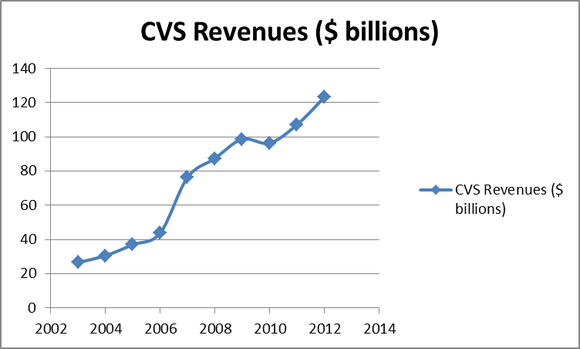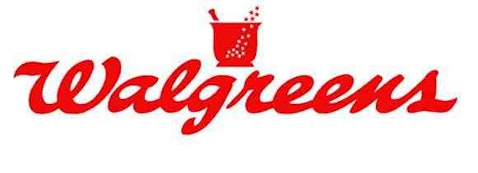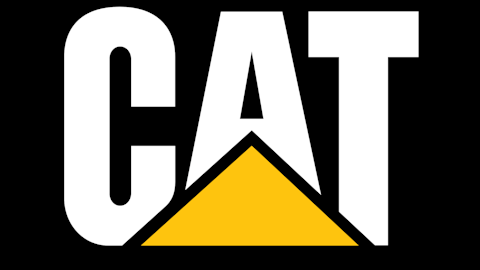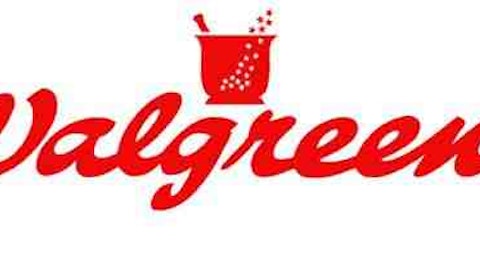Walgreen Company (NYSE:WAG) has been one of my favorite stocks in the market for some time now, and I have recommended it several times. Since the last time I wrote about the company (early March), Walgreen Company (NYSE:WAG) is up by over 17%, so congrats to whoever listened to me and bought. This type of a gain in such a short time period produces another dilemma. It makes us ask the question: “Is Walgreen still a good buy?” While the gain is nice, it means that the company’s dividend yield has dropped from 2.62% to 2.29%, and it now trades at a P/E of 21.4 as opposed to 18.5. Should investors in Walgreen cash in, or hang on in the hopes of more upside ahead?
Walgreen in a Nutshell
Walgreen Company (NYSE:WAG) operates almost 8,400 drug stores throughout the United States which produce total revenue of about $72 billion annually. The company’s pharmacies filled almost 800 million prescriptions last year, which is about 20% of the entire U.S. prescription drug market. Over the past decade alone, revenues have more than doubled for Walgreen Company (NYSE:WAG), which has been in business since 1909 but has only been operating freestanding stores since 1992.

Express Scripts Saga
If you take a closer look at the chart above, you’ll notice a slight drop-off in revenue after 2011 after almost linear growth before this point. On Jan 1, 2012, Walgreen’s contract with Express Scripts Holding Company (NASDAQ:ESRX), the largest pharmacy benefit management company in the U.S., expired. Once the contract expired, Walgreen Company (NYSE:WAG) was no longer a part of Express Scripts’ network, and customers covered under Express Scripts-administered health plans were forced to seek alternatives to fill their prescriptions.
Express Scripts Holding Company (NASDAQ:ESRX) has grown tremendously since first entering into the original contract with Walgreen and in fact has increased its revenues by over 600% during the past decade. Express Scripts Holding Company (NASDAQ:ESRX) provides pharmacy benefit management for such huge clients as Wellpoint, the U.S. Department of Defense, and UnitedHealth Group Inc. (NYSE:UNH). It is easy to see that Walgreen could not afford to lose all of this business forever.
The companies eventually settled their battle over payment issues and agreed to a new multi-year agreement which began on Sept 15 of last year; however, the company estimates that they lost up to $4 billion in sales as a result of this mess. If you look at the chart and follow the growth pattern, one would have predicted about $75 billion in revenue for 2012, which is about what the company would have produced if this mess had never happened.
CVS: The Better Deal Now?
Bear in mind that just because Walgreen Company (NYSE:WAG) and Express Scripts worked out their differences doesn’t mean that all of the former Walgreen customers will immediately flock back to their old pharmacies. Studies done by both companies indicate that most of the lost prescription customers moved to CVS Caremark Corporation (NYSE:CVS), and it may not be such an easy task to lure that business back.
On that note, CVS Caremark Corporation (NYSE:CVS) may be the better investment right now. Completely opposite of what we saw in Walgreen’s chart, CVS experienced a revenue spike in 2012, which confirms the theory that most of Walgreen’s fleeing customers wound up at CVS Caremark Corporation (NYSE:CVS).

In addition to the Express Scripts customers, which were mostly responsible for CVS Caremark Corporation (NYSE:CVS)’s 24% spike in PBM (pharmacy benefit management) sales, CVS is expecting another $400 million in new PBM clients as a result of the new U.S. health care laws. The company is also planning to open a bunch of new stores, which will increase their overall square footage by about 2%, very significant for a company as large as CVS.
On top of all of that, CVS just looks like the cheaper option right now.CVS trades at just 18.2 times TTM earnings, as opposed to 21.4 for Walgreen. CVS is also expected to grow its earnings quicker as a result of benefiting more from the increased PBM volume that is projected to occur over the next few years. The consensus is for CVS Caremark Corporation (NYSE:CVS) to grow its earnings by an average of 13.3% annually over the next three fiscal years versus 11.3% for Walgreen, which is also expected to significantly benefit from the new health care laws, just to a slightly lesser extent.
Conclusion
Cheaper valuation, better growth, and a great share repurchase plan of $4 billion make CVS look like the better choice now. Walgreen Company (NYSE:WAG)’s shareholders, who have seen their shares rise very nicely, may want to look at this as a good opportunity to take at least some of their gains and maybe shift those into CVS Caremark Corporation (NYSE:CVS), which is clearly the better value.
The article Drugstore Chains: Time for a Change? originally appeared on Fool.com and is written by Matthew Frankel.
Matthew Frankel has no position in any stocks mentioned. The Motley Fool recommends Express Scripts. The Motley Fool owns shares of Express Scripts. Matthew is a member of The Motley Fool Blog Network — entries represent the personal opinion of the blogger and are not formally edited.
Copyright © 1995 – 2013 The Motley Fool, LLC. All rights reserved. The Motley Fool has a disclosure policy.





